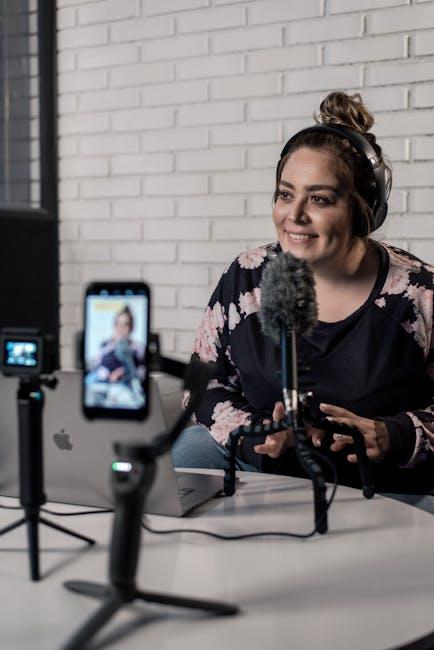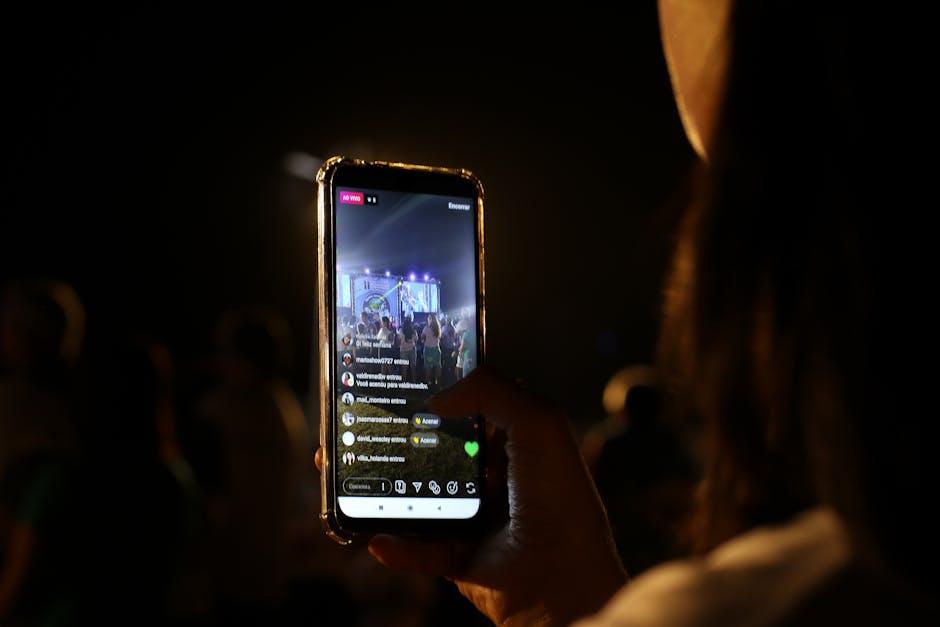In today’s digital age, streaming live events in high definition has become an essential part of both personal and professional settings. Whether you’re broadcasting a concert, a corporate seminar, or a sports event, ensuring a smooth and uninterrupted stream is crucial for delivering a high-quality experience to your audience. However, achieving this can often be challenging due to various technical and logistical hurdles. This article aims to provide you with practical tips and strategies to optimize your live streaming setup, minimize interruptions, and deliver content in crystal-clear HD. By following these guidelines, you can enhance viewer satisfaction and ensure your live event reaches its full potential.
Choosing the Right Streaming Platform for HD Quality
When it comes to streaming live events in HD, selecting the right platform is crucial to ensure a smooth, high-quality experience. Key factors to consider include the platform’s bandwidth capabilities, device compatibility, and user interface. Look for platforms that offer adaptive bitrate streaming, which automatically adjusts the video quality based on the viewer’s internet connection, reducing buffering and interruptions.
Additionally, evaluate the support for multiple devices and operating systems. Ensure the platform you choose is compatible with the devices your audience uses, whether that’s smartphones, tablets, or smart TVs. User experience is also vital; a platform with a clean, intuitive interface can enhance viewer engagement. Some popular options that meet these criteria include:
– YouTube Live: Known for its reliability and vast audience reach.
– Twitch: Offers robust community features and is popular for gaming events.
– Vimeo Livestream: Provides professional-grade streaming with customization options.
– Facebook Live: Integrates well with social media for broader audience interaction.
Remember, the best platform will align with your specific event needs and audience preferences, so take the time to explore and test different options before making a decision.

Optimizing Your Internet Connection for Seamless Streaming
To ensure a smooth streaming experience, it’s crucial to have a reliable and fast internet connection. Here are some practical tips to optimize your connection for uninterrupted HD streaming:
- Upgrade Your Router: An outdated router can be a bottleneck. Consider upgrading to a dual-band or tri-band router for better bandwidth management and reduced interference.
- Prioritize Network Traffic: Use Quality of Service (QoS) settings to prioritize streaming devices over other connected devices, ensuring they receive the necessary bandwidth.
- Wired Connections: For the best performance, connect your streaming device directly to the router using an Ethernet cable. This reduces latency and provides a stable connection compared to Wi-Fi.
- Optimize Wi-Fi Settings: Place your router in a central location, away from walls and obstructions. Ensure it’s set to a less congested channel to minimize interference from other networks.
- Regularly Update Firmware: Keep your router’s firmware up-to-date to benefit from performance improvements and security enhancements provided by the manufacturer.
Implementing these strategies will enhance your streaming setup, allowing you to enjoy live events in HD without the frustration of buffering or lag. Remember, a well-optimized internet connection is the backbone of a seamless streaming experience.

Essential Equipment for High-Definition Live Streaming
To ensure a seamless high-definition streaming experience, having the right gear is paramount. Start with a high-quality camera capable of capturing clear, detailed images. Look for options that support at least 1080p resolution and offer good low-light performance. Pair this with a reliable microphone to ensure crystal-clear audio. Condenser mics are generally preferred for their sensitivity and range, but dynamic mics can also be a great choice for noisy environments.
Equally important is a stable internet connection. Aim for an upload speed of at least 5 Mbps to maintain HD quality without buffering. Additionally, a dedicated encoder can significantly enhance the quality of your stream. Choose between hardware encoders for robust, reliable performance, or software encoders for more flexibility and control. Don’t forget the lighting equipment; good lighting can dramatically improve your video quality, making even an average camera look professional. invest in a streaming platform that supports HD content and offers features like live chat and analytics.
- Camera: At least 1080p resolution
- Microphone: Condenser or dynamic
- Internet: Minimum 5 Mbps upload speed
- Encoder: Hardware or software
- Lighting: Essential for enhancing video quality
- Platform: Supports HD and offers interactive features

Configuring Software Settings to Prevent Interruptions
To ensure a smooth and uninterrupted streaming experience, it is essential to fine-tune your software settings. Start by adjusting the bitrate settings. A lower bitrate may help if your internet connection is unstable, but ensure it doesn’t compromise video quality. Aim for a balance that maintains HD quality while allowing for a buffer against potential bandwidth fluctuations.
- Resolution: Opt for a resolution that matches your device’s capability and your internet speed. Common choices are 720p or 1080p for HD streaming.
- Frame Rate: Set your frame rate to 30 fps or 60 fps. Higher frame rates can deliver smoother video but require more bandwidth.
- Encoder Settings: Use an efficient encoder like H.264, which provides high-quality video at lower bitrates.
- Buffer Size: Adjust the buffer size to prevent buffering issues. A larger buffer size can help smooth out network inconsistencies.
Remember to test your settings before going live. Conducting a trial run will help you identify any potential issues and make necessary adjustments, ensuring your live event streams seamlessly.







































